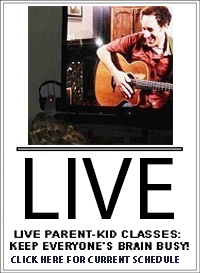Like most musical genres, disco didn’t just appear fully formed, but rather emerged bit by bit as R&B, Motown, Latin and Jazz musicians added new beats, lavish production and synthesized instruments to their songs. By the early ’70s songs like African artists MANU DIBANGO‘s “Soul Makossa” [watch this great 1974 performance] and HUES CORPORATION‘s “Rock the Boat” [watch this disco-rific video] had started to weave funk, soul and electronic sounds togeuther to form a new form of dance music. In retrospect the 1974 hit “Kung Fu Fighting,” sung by CARL DOUGLAS, provided a kind of roadmap for the burgeoning genre–a catchy song with a great beat that’s not so heavy on lyrical meaning. [Meet disco as much of Europe did–with performances such as this one, of “Kung Fu Fighting” in West Germany.]
One element of this emerging genre that broke new ground was its reliance on DJs to take the most danceable elements of a song and blend them together into “extended mixes” (“remixes”) that gave club-goers a chance to keep dancing, dancing and dancing. DJs took advantage of advances in recording and record-playing technology, using reel-to-reel tape machines to add new sections, unexpected sounds and infectious drum beats to already-established songs. The first disco “club” was “The Loft,” which was actually the home of New York City DJ DAVID MANCUSO who invited hundreds of his friends over every Saturday night for a “rent party.” Mancuso spun records from many genres, but he quickly found that the funkier the sounds and the more driving the beat the more likely his crowd was to dance. [Learn about Mancuso and “The True Origins of The Loft.”] New York City soon became the center of a frenetic dance scene that featured clubs like “Studio 54” which became gathering spots for the young, the fashionable and, eventually, the famous.
When disco hit the mainstream, it hit big. The popular TV show Dance Fever featured disco-dancer extraordinaire DENNY TERRIO, who invited celebrity guests aplenty to dance with him at a seemingly unending dance party. [Dance Fever rocks soooooo hard. And you know you must buy K-Tel’s “Night Moves.”] In addition to hosting Dance Fever, Terrio worked as a private instructor to a young actor who was training to dance in a 1977 movie that aimed to propel disco beyond its still primarily black, Latin and homosexual audience. The actor was John Travolta. The movie was Saturday Night Fever. And it worked. [Watch the now famous Saturday Night Fever line dance. Don’t you want to disco?]
DISCO SUPERSTARS:
Disco was flashy and bold, and the disco audience expected its superstars to be the same. No disco star was more dynamic than “The Queen of Disco,” DONNA SUMMER. Summer epitomized the confident woman of the era, a woman who was not afraid to take her life–and her audience–by the reigns. Some of Summer’s most provocative live performances from the ’70s are available on YouTube–watch her in performance, in her prime, and you’ll understand why she was so electric–but is you’re sitting in front of the computer with your kids, you should at least be able to watch Summer sing about cake. Enjoy Donna Summer performing “Macarthur Park” live in 1978. (“Someone left my cake out in the rain….and I’ll never have that recipe again…OH NO!!!!!!!!!!!!!!!!!!!!!!!!!!!!!!!!!!!!!!!!!!!!!!!!!!!!!!!!!!!“) Another star disco vocalist, GLORIA GAYNOR, wasn’t as sultry as Summer but “sleek” wasn’t her selling point. Watch Gloria Gaynor perform the bold and beautiful anthem, “I Will Survive” in 1979.
An engaging male disco star, Miami based keyboardist Harry Wayne “KC” Casey,” led K.C. AND THE SUNSHINE BAND through a series of top hits between 1975 and 1977, such as “Get Down Tonight,” “That’s the Way (I Like It),” “(Shake, Shake, Shake) Shake Your Booty.” (KC wanted you to dance…ya think?!) [Watch K.C. and the Sunshine Band, complete with a smokin’ horn section, performing “Get Down Tonight” in 1975 on Burt Sugarman’s Midnight Special]. Another smokin’ band, THE TRAMMPS, formed on the rough streets of North Philadelphia; watch them burn up Midnight Special with “Disco Inferno” in 1976. Take note that audiences of the time were well aware of recent events in American history in which the “burning” in question was literal–the Watts Riots, for example, and similarly violent confrontations in other cities throughout the mid and late 1960s. The Trammps wanted the crowd to “burn up the dance floor,” not to actually burn the dance floor.
So disco did have a message, eh? Of course. Everything does.
And Nile Rodgers of the disco band CHIC would agree. Rodgers had been involved in the hippie community in late ’60s New York and formed Chic as a hippie rock band that just happened to play disco. Chic’s 1978 “Le Freak” and the 1979 favorite “Good Times” brought Rodgers’ cultural and political messages to the masses. What were those messages…? Well…. Rodgers claims that each Chic song had something called “D.H.M.”–“deep hidden meaning.” Granted, he was a bit vague about the actual meaning of that meaning. In fact, you’d be hard-pressed to find any literal meaning in the lyrics of “Le Freak” or in another Chic hit, “Dance, Dance, Dance (Yowsah, Yowsah, Yowsah).”
Deeply hidden, though…? Definitely. [Watch Chic perform “Le Freak” live in 1978 on Midnight Special, complete with an introduction by Wolfman Jack) | What song could possibly mean more than “Dance, Dance, Dance, Yowsa Yowsa Yowsa?”]
One disco group whose songs truly did have deep hidden meaning was THE VILLAGE PEOPLE. Though songs like “Macho Man” and “YMCA” didn’t exactly boast challenging lyrics, and though, on the surface, the idea of members of a vocal ensemble wearing costumes–“the cowboy!” “the cop!”–may not exactly seem profound, The Village People proudly hailed
from New York’s Greenwich Village, the nexus of a boundary-breaking outgrowth of the counterculture. “The Village” was a multi-racial community that included people of many sexual orientations in a way that broke new ground in America in the ’70s. The Village People boldly
proclaimed themselves part of that community, and by doing so, gave other community members the confidence to join them. [Meaningful or not, how could you not love the Village People after watching their 1978 videos for “YMCA” and “In the Navy?”]
Not every group that was popular in the disco era used flashy lights and fancy costumes and hidden meaning, deep or otherwise, to generate hits. Composed of three brothers from Australia, THE BEE GEES–the brothers Gibb–relied on good old fashioned catchy songwriting to connect with the crowds. They performed their many hits like “You Should Be Dancing,” “Stayin’ Alive,” “Night Fever” and “More Than a Woman” in a unique, tightly harmonious falsetto. Their younger brother, Andy Gibb, followed with hits like “I Just Want to Be Your Everything” and “Shadow Dancing.” [Watch the Bee Gees’ electrifying performance of “Stayin’ Alive” in 1979 to get a taste of their talent.]
By the late ’70s–before disco’s abrupt downfall, which we’ll touch on below–many non-disco performers saw the commercial potential of the genre and wanted to hop on the disco train. Remakes of non-disco songs in a disco style became commonplace; for example, in 1979 the decidedly un-funky Ethel Merman reworked some of her greatest hits for The Ethel Merman Disco Album. [Listen to the disco version of “Everything’s Coming Up Roses.”] Even classical musicians got into the act, such as conductor Louis Clark, whose series Hooked on Classics, which disco-fied classical music, was a huge hit. [Watch Clark and a classical orchestra/disco band perform live.]
Most other non-disco artists interacted with the genre more organically, weaving some of disco’s sounds into their own original works. Popular songwriter Barry Manilow had a huge hit with “Copacabana” which blended disco with Latin beats. [Watch Manilow perform “Copacabana,” live in 1981, huge pineapple ruffle shirt and all.] Punk-ish band Blondie’s 1982 song “Heart of Glass” was more or less a disco song, though Blondie was definitely not The Village People.




